![]()
Shortly after 3.40am on Friday the 31st August 1888, a cartman by the name of Charles Cross was making his way to work along the narrow, cobbled street of Buck’s Row, Whitechapel when he came across a dark bundle lying on the pavement close to the door of a stable yard on the left side of the road.
Buck’s Row consisted of around half a dozen houses of very low class and like many other alleys and passageways in Victorian London, the street lighting was minimal at best. As Cross approached the bundle, he at first took it be perhaps that of a tarpaulin or something similar and thinking it may be something of use to him, he knelt down to inspect it but it quickly became obvious that this was no sheeting or a bundle of rags, as the face of a woman came into view.
Recoiling back, he wasn’t sure at first if she was drunk or possibly dead but the sound of footsteps approaching him from behind soon snapped him out of the obvious shock he was in.
Coming in his direction was another carter by the name of Robert Paul. “Come and look over here” Cross would call over to him, “there is a woman lying on the pavement.”
Looking down at the woman, both men weren’t sure of what they were dealing with so Cross took the initiative and crouched down to touch her face, which, at the time was still relatively warm. However, her hands were cold and limp. “I believe she is dead,” remarked Cross.
Paul then knelt down and placed his hand on her chest and in doing so he thought he felt a slight movement, “think she is breathing,” he said, “but very little if she is.”
Paul wanted to sit the woman up but Cross refused, instead he pulled her petticoats down to protect her modesty. What they did next may seem a callous thing to do, but both men, worrying that they may be late for work, decided to leave the woman on the street and agreed that they would inform the first policeman they encountered.
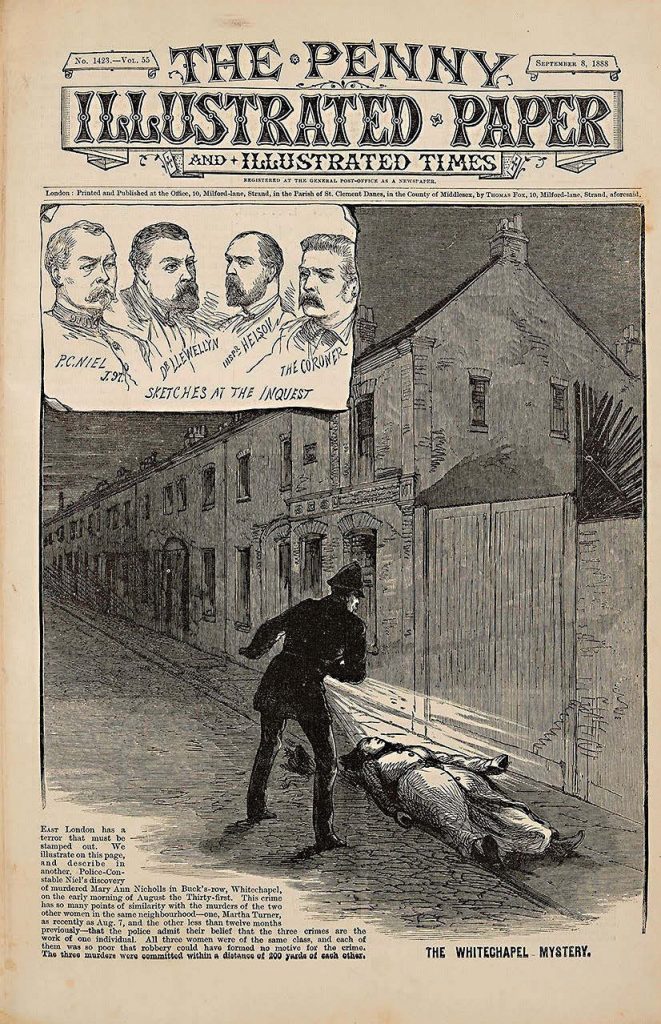
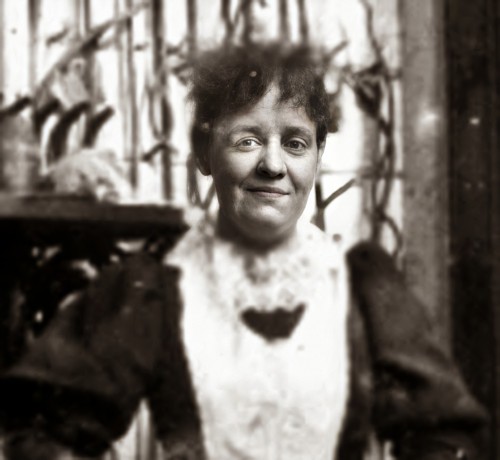
Mary Ann Nichols 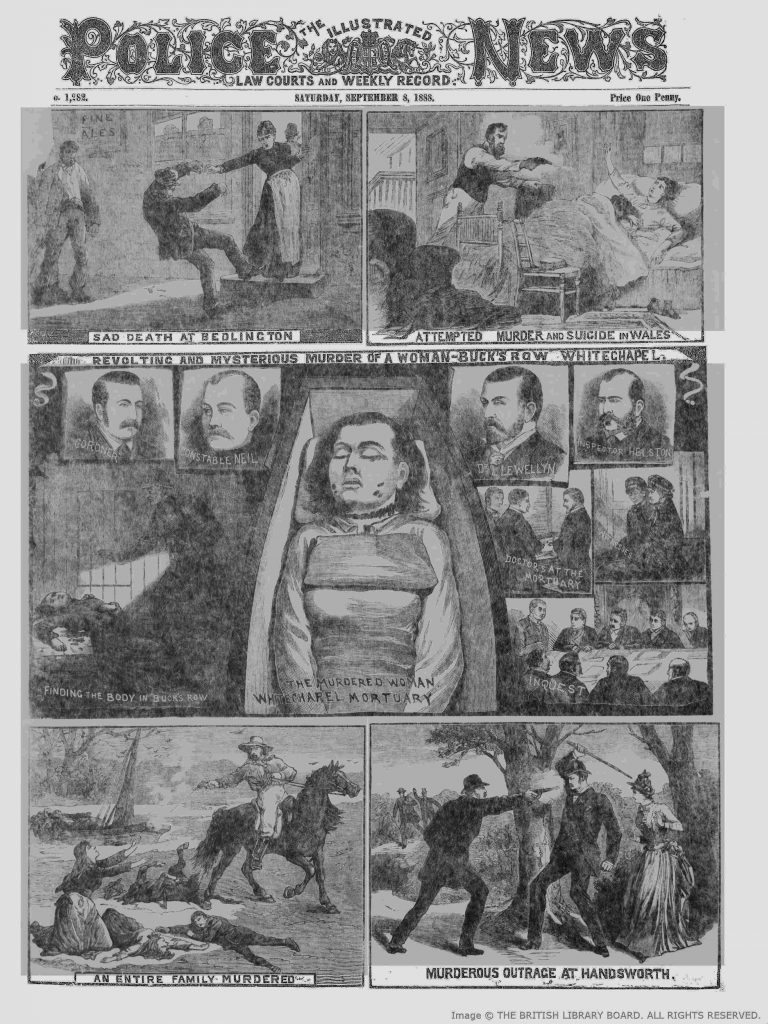
It may have only been for a few minutes, but they narrowly missed Police Constable John Neil who, himself, had made his way towards Buck’s Row whilst walking his beat, and at 3.45am, Neil shone his lantern into the direction of the gateway where the woman was lying.
Upon closer inspection, he noticed it was a woman and thinking she may have been intoxicated he stooped down to try and sit her up. In doing so, he noticed the deathly whiteness of her face, stained in blood and her throat having been slit from ear to ear.
Fortunately, Police Constable Thain was passing by at the end of the street. Noticing him, Neil shouted over, “Here’s a woman with her throat cut. Run for Dr Llewellyn.”
As Thain hurried off to fetch the doctor, Police Constable Joseph Mizen had arrived, having been alerted by Paul and Cross a little earlier. Neil sent him to fetch reinforcements as well as a police ambulance, which would arrive shortly thereafter.
Dr. Rees Ralph Llewellyn’s surgery was only 300 yards from the area where the woman’s body lay and having been quickly aroused from his sleep from the noise of banging on his door by PC Thain, he made his way to the scene shortly around 4am.
After a hasty inspection and pronouncing life extinct, Dr Llewellyn had become slightly disillusioned as to the amount of sightseers that had now accumulated, so asked for the body to be placed onto the police ambulance that had arrived from Bethnal-Green Police Station and to be removed back there.
In doing so, police constables Neil and Thain noticed that the woman’s clothes had become saturated with blood, which Llewellyn assumed had come from the wound in the neck. Llewellyn also noticed, upon the removal of the body, that a mass of congealed blood had rested on the pavement, measuring roughly six inches in diameter that had begun to run towards the gutter.
James Green, a neighbour that lived next to the stable yard soon came out to see what the commotion was, and whilst doing so he was asked to wash away what little blood there was, and this is something we will refer to shortly.
Inspector John Spratling arrived not too long after, but with the body having already been transferred to the mortuary and with the evidence now seemingly washed away, there was very little for him to do other that make his way to the mortuary where he would begin the process of detailing the victim.
Upon arriving, he soon began to write down a description of the victim but it was only when he lifted the woman’s petticoats that the true extent of her injuries would, for the first time, become known.
On closer inspection, he noticed a deep gash had been made all along the woman’s abdomen and that she had been disemboweled. Spratling immediately sent for Dr. Llewellyn so he could comment on the wounds inflicted on the woman but by the time he arrived at the mortuary, keeper of the mortuary, Robert Mann and an inmate of the Whitechapel workhouse, James Hatfield, had already stripped the body, throwing away her garments onto the mortuary floor as well as washing the body clean – possibly destroying any evidence that may have aided in the police in their investigation.
This would be mentioned at the following inquest and the police would be criticized for allowing this to happen, although the police were adamant they had told the attendants NOT to touch the body until Dr. Llewellyn had conducted a full and detailed post-mortem.
An inventory of her clothes, taken by Inspector Spratling at the mortuary described them as being shabby and stained. She was wearing the following items;
- Black Straw bonnet trimmed with black velvet
- Reddish brown ulster with seven large brass buttons bearing the pattern of a woman on horseback accompanied by a man.
- Brown linsey frock
- White flannel chest cloth
- Black ribbed wool stockings
- Two petticoats, one gray wool, one flannel. Both stenciled on bands “Lambeth Workhouse”
- Brown stays (short)
- Flannel drawers
- Men’s elastic (spring) sided boots with the uppers cut and steel tips on the heels
In her possession she had a comb, a white pocket handkerchief and a broken piece of mirror, which was a prized possession in a lodging house!
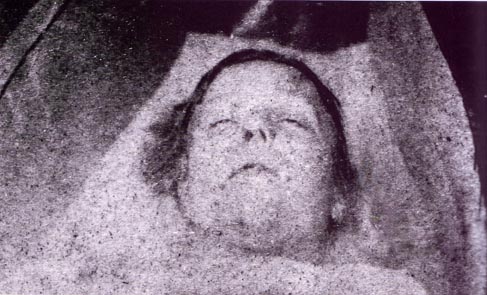
Mary Ann “Polly” Nicols 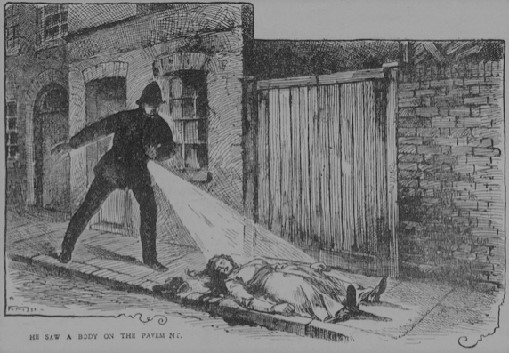
Scene at Buck’s Row 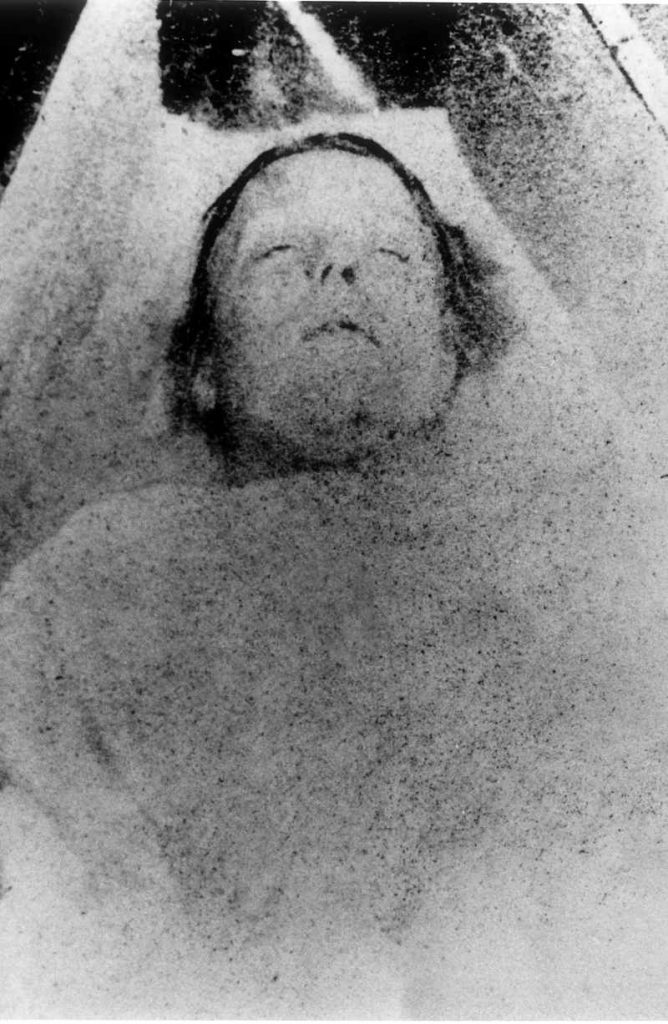
Mary Ann “Polly” Nicols
Meanwhile, and back over at Buck’s Row, PC Neil had begun the process of speaking to the residents in the nearby buildings with one being that of Mrs. Emma Green, proprietor of a house that was next door to that of the stable where the woman’s body had been found. Neither she nor any of her family, who were all sleeping within yards of where the body lay had heard any outcry during the night.
“I should have heard it had there been any, I think,” Mrs. Green told PC Neil, “for I have trouble with my heart and am very light sleeper. My son went down soon as the body was taken away, and washed away the blood stains on the pavement. There was quite a little pool, though I understand most of it soaked into the woman’s dress. I looked out and saw the body as it lay there. It was lying straight across the gateway, its head toward me. It was not lying in a heap as if it had fallen, but on its back, and straight, as if it had been laid there. I could not tell at first whether it was a man or woman, but James, my son, who went downstairs, returned, and told me it was a woman. This was four o’clock in the morning.”
Across the street lived Mr Walter Purkiss, along with his wife who was not well, and their children and a servant. They both slept in the front room on the second floor and neither of them had heard any commotion during the early hours, even though both at that had been awake on and off at short intervals up until four o’clock. Both agreed it was a unusually quiet night as they would normally be awoken by drunken men passing by the house shouting loudly or fighting which disturbed their sleep.
Above Purkiss’ house was Schneiber’s Cap Factory, and the watchman – Patrick Mulshaw, whose wooden depot was overlooking the street corroborated what the Purkiss had said and that no sound of any outcry or commotion was ever heard. But, he did confess that he was prone to nodding off whilst on duty and whilst he was honest enough to say this, he was adamant he was awake between 3am and 4am that morning.
During the morning, detectives would be out, searching the stable as well as the entire street for any signs of a clue as to who the murderer may have been but unfortunately, none appeared.
And one newspaper article reported that officers were of the opinion that the murder may have taken place in another place and the body being placed where it would be eventually found.
The reason for this theory was because some excitement took place over on Brady Street, which was a long thoroughfare that runs to the left of Buck’s Row. Blood stains had been found that went for some distance along the sidewalks. There was drop after drop for two or three feet and sometimes six feet apart and then a large pool or splash would appear. By following the path of the blood stains, it would appear that whoever had left them had staggered in a zigzag kind of fashion or may have even been carried. The stains continued for around 150 yards to a place known as Honey’s Mews and in the gateway there was another large stain as if the victim had fallen against the wall or had been placed down.
From here and up to Buck’s Row, where the body was found, the blood stains where clearly marked. This would therefore explain why there was seemingly very little blood at the scene where the victim was found.
Unlike the residents of Buck’s Row, the residents on Brady Street did come forwards with stories of how they had heard screams in the early hours of the morning but didn’t pay too much attention to them as ungodly sounds could be heard most nights and as such had become a common occurrence.
Mrs Colwell, who lived midway between Buck’s Row and Brady Street said, “I was awakened early by my children, who said someone was trying to get into the house. I listened, and heard screams. They were in a woman’s voice, and though frightened, were faint like. She was screaming “Murder, police! Murder, police, murder police.” She screamed this five or six times, and seemed to be getting further and further away (towards the bottom of Buck’s Row) all the time. I heard no other voice or no other steps. She seemed to be all alone, I think I would have heard the steps if anybody had been running after her, unless they were running on tiptoe.”
The press, as would the police, therefore assumed that the initial attacked had been committed prior to the woman having arrived at Brady Street, but what still puzzled them was how anybody could have possibly walked, or ran, the entire length of the street whilst losing so much blood in such a short space of time.
One theory was that perhaps the murderer had only partially completed his work and followed the woman to where she would eventually fall, where he would then finish her off before carrying her to the stable yard gateway along Buck’s Row.
However, some of the above statements where later to be proved false as the area was later to be investigated by Sergeant Enright and neither blood stains nor any wheel marks were found to indicate that the murder had taken place anywhere other than where it was found.
Inspector Fredrick Abberline himself after having been assigned to the case had walked carefully over the ground at around 8am that morning and found no signs of staining other than discoloration normally found on the pavements.
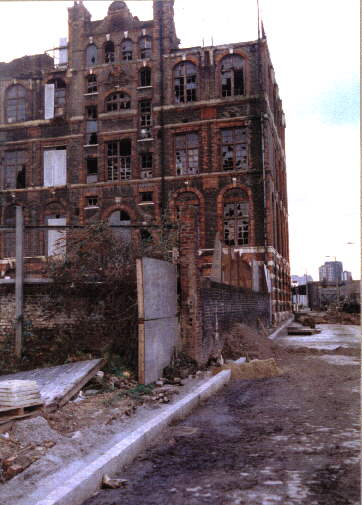
Bucks Row – the spot where Mary Ann Nichols body was found in 1888. 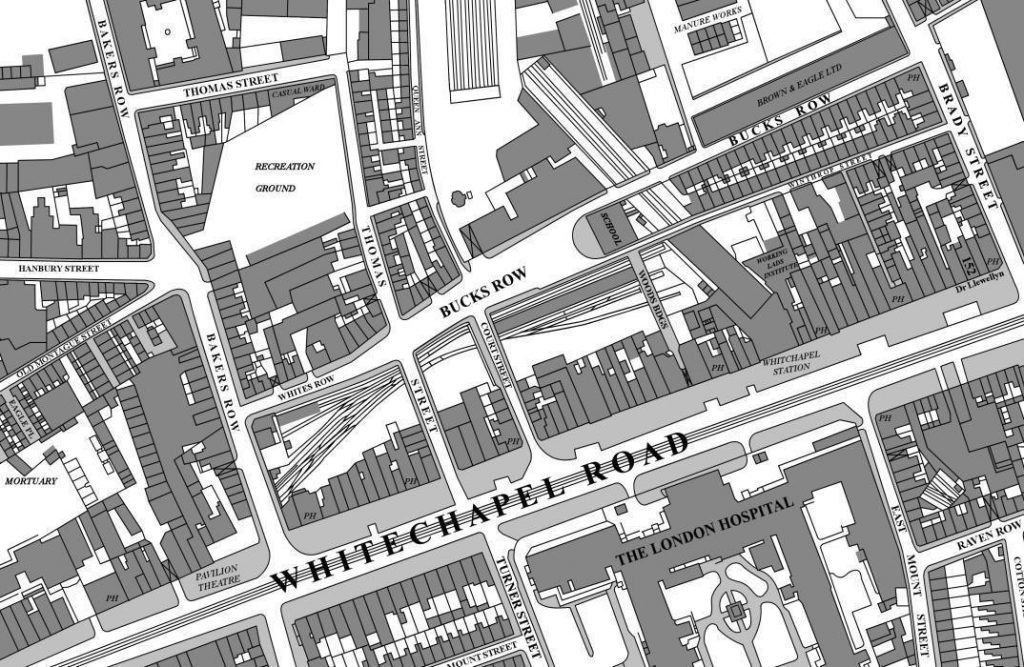
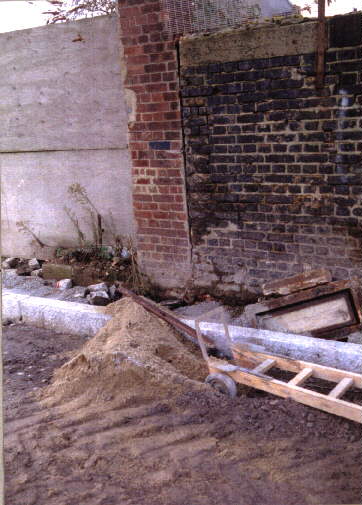
Bucks Row – the spot where Mary Ann Nichols body was found in 1888.
By mid-afternoon, the Police had been canvassing the area in the hope of discovering the identify the woman and soon after, several woman came forwards and identified her as a woman locally known as “Polly” and who had been living at a nearby lodging house at number 18 Thrawl Street.
They had also tracked down her father, Edward Walker as well as her estranged husband, William Nichols who was taken to the Old Montague Street Workhouse to view the body.
There, he seemed distressed at what he saw, shaking his head in disbelief that the woman lying butchered in front of him was that of his wife, Mary. Leaning over to her, he whispered, “I forgive you, as you are, for what you have been to me.”
Inspector Spratling, had himself been doing his own investigation into her identity as he had noticed, whilst taking down notes of her description, that the woman’s petticoat had markings showing the Lambeth Workhouse. Later that day he visited the workhouse and spoke to a lady by the name of Mary Ann Monk who was brought to the mortuary and identified the woman to be that of Mary Ann Nichols, who was a fellow resident up until May of that year.
Rumours began to circulate about a gang commonly known as the “high rip gang” who resided in the neighborhood which blackmailed women who frequented the streets into paying them money, and if they failed to do so they would seek out vengeance on them.
Another theory that quickly gained some momentum was that Mary had been in a state of undress in a house somewhere nearby when the attack took place, after which her clothes where then huddled onto the body which was then afterwards conveyed out onto the street.
THE CORONERS INQUEST
The coroner’s inquest took place on Saturday, 1st September and was opened by Mr. Wynne Edward Baxter, the coroner for South-East Middlesex. The inquiry took place at the Working Lad’s Institute, Whitechapel Road.
Police Constable John Neil was just one of the many witnesses to take to the stand and he would go into great detail, as you would expect from a police constable, into the events of that morning.
He described as finding the deceased as lying on her back, with her clothes rearranged. He felt her arm which was quite warm from the joints upwards and her eyes were wide open. He also remembers seeing her bonnet was off and lying at her side, close to her left hand.
When asked by the coroner if there was any blood where she was found, Neil replied, “There was a pool of blood just where the neck was lying. It was running from the wound in her neck.”
Dr. Llewellyn would next take to the stand and it’s here that the full details of Mary Ann Nichol’s injuries would be heard for the first time.
“I have this morning made a post-mortem examination of the body. I found it to be that of a female about forty or forty-five years. Five of the teeth are missing, and there is a slight laceration of the tongue. On the right side of the face there is a bruise running along the lower part of the jaw. It might have been caused by a blow with the fist or pressure by the thumb. On the left side of the face there was a circular bruise, which also might have been done by the pressure of the fingers. On the left side of the neck, about an inch below the jaw, there was an incision about four inches long and running from a point immediately below the ear. An inch below on the same side, and commencing about an inch in front of it, was a circular incision terminating at a point about three inches below the right jaw. This incision completely severs all the tissues down to the vertebrae. The large vessels of the neck on both sides were severed. The incision is about eight inches long. These cuts must have been caused with a long-bladed knife, moderately sharp, and used with great violence. No blood at all was found on the breast either of the body or clothes. There were no injuries about the body till just about the lower part of the abdomen. Two or three inches from the left side was a wound running in a jagged manner. It was a very deep wound, and the tissues were cut through. There were several incisions running across the abdomen. On the right side there were also three or four similar cuts running downwards. All these had been caused by a knife, which had been used violently and been used downwards. The wounds were from left to right, and might have been done by a left-handed person. All the injuries had been done by the same instrument.”
The inquiry would be adjourned until Monday, the 3rd September where further witnesses would be called. Inspector Spratling, Henry Tomkins – a horse slaughterer, Inspector Joseph Helson, Police Constable Mizen, Charles Cross, Robert Paul, Emily Holland and Mary Ann Monk would all give evidence either as people who knew Mary Ann Nichols or whom where in the vicinity on the morning of the murder.
Most importantly, William Nichols – husband to Mary, would also be questioned. He would state on record, “that the deceased was his wife, but they had lived apart for eight years. He last saw her alive about three years ago, and had not heard from her since. He did not know what she had been doing in the meantime.”
He also mentioned that, “he did not leave his wife, but that she left him of her own accord. She had no occasion for so doing and if it had not been for her drinking habits they would have got on all right together.”
The inquest would last for a total of four days with many more witnesses coming forwards and it would end on the 22nd September 1888 with the jury, after a short consultation, returning a verdict of wilful murder against some person or persons unknown.
Mary Ann “Polly” Nichols was buried on Thursday, 6 September, 1888 at the City of London Cemetery (Little Ilford), Manor Park Cemetery, Forest Gate, London.
Her body was removed from the mortuary and taken to the undertaker in Hanbury Street. She was placed in a polished elm coffin, bearing a plate with the inscription, Mary Ann Nichols, aged 42; died August 31, 1888.
Her grave is numbered as 210752. Although the inscription plate gave her age as being 42, she was actually 43 years old and even at the inquest, her father said she was almost 44.
In an unfortunate twist of fate, one could say, her body would be removed from the mortuary where she had lain since the day of her murder, via the back gate which was located on Chapman’s Court – a name we will be hearing again very soon!
Sources used in this story;
London Daily News – Saturday 01 September 1888
Morning Post – Saturday 01 September 1888
Shields Daily Gazette – Saturday 01 September 1888
Illustrated Police News – Saturday 08 September 1888
Aberdeen Evening Express – Friday 31 August 1888
+ many more courtesy of the British Newspaper Archive – www.britishnewspaperarchive.co.uk
Thanks to the following;
Opening sequence music – Outsider by Myuu
Ambient music – Contact by The Tower of Light. No Copyright Music.
Ending sequence music – Casual Desire by Ugonna Onyekwe. No Copyright Music.
Please follow me on social media;
Twitter – https://twitter.com/dohpods
Instagram – www.instagram.com/dohpods

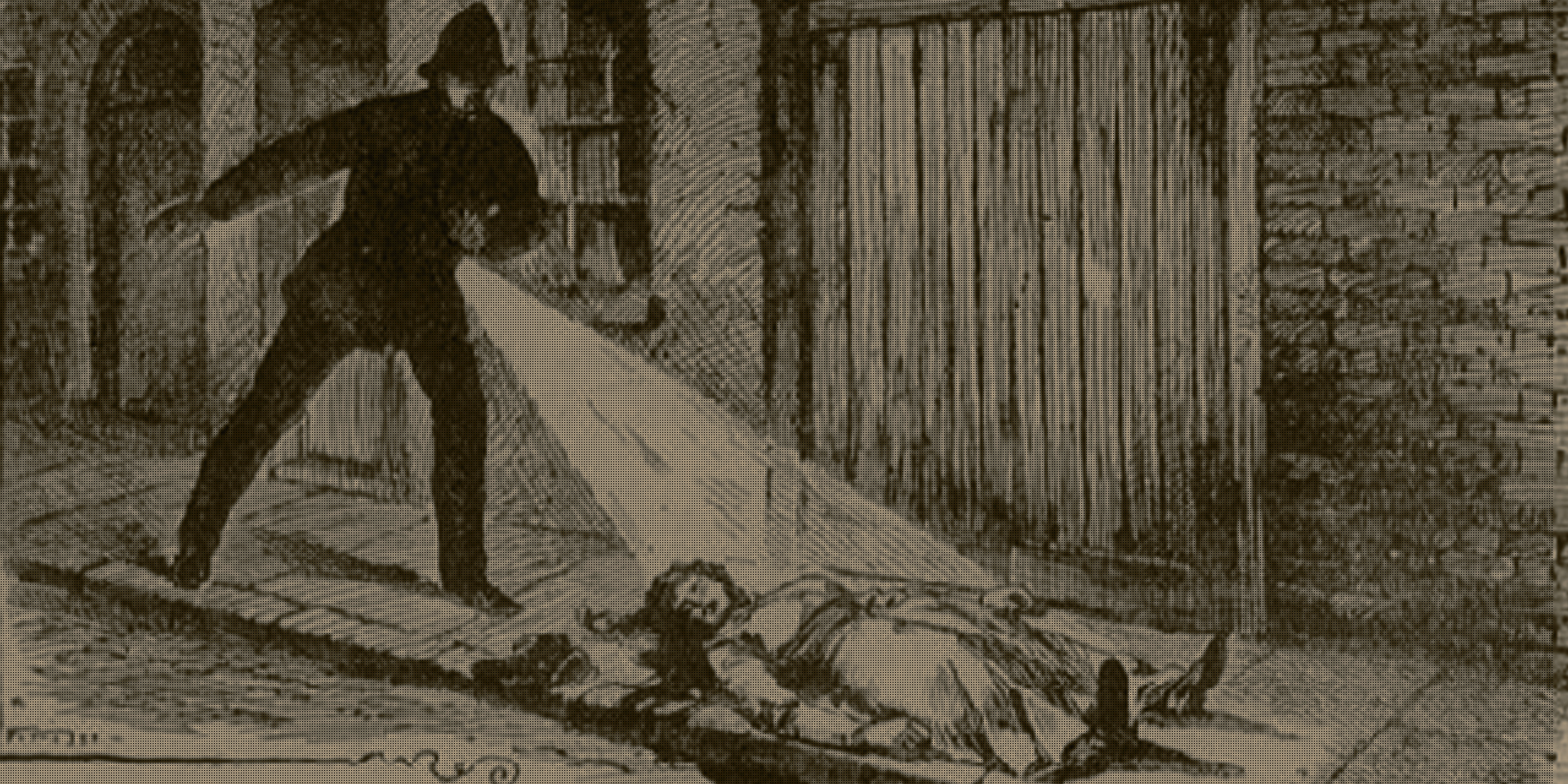
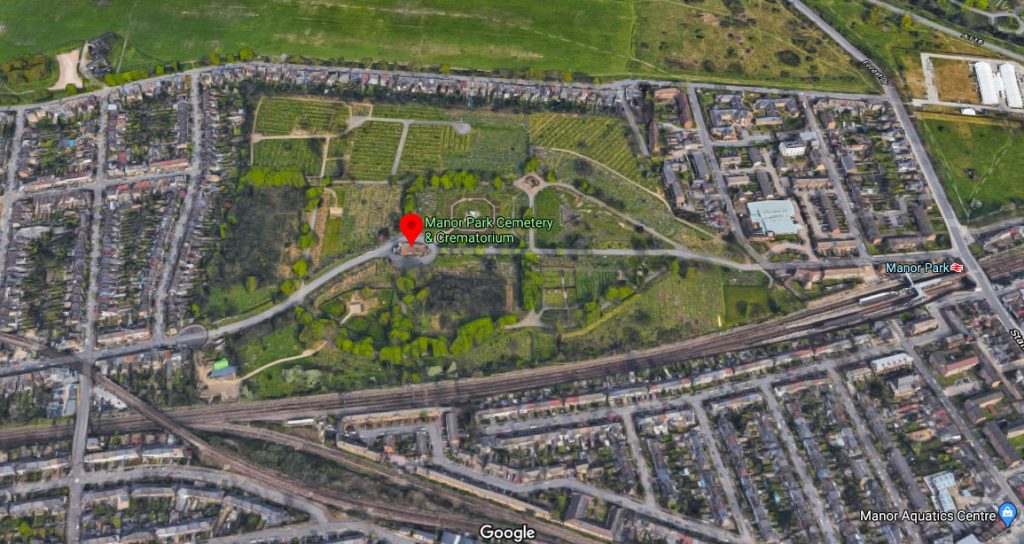
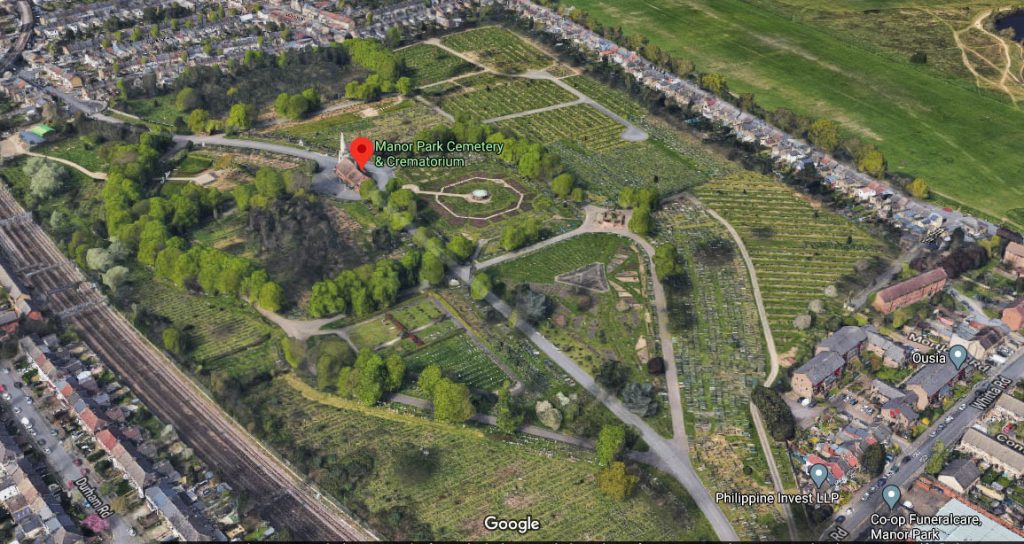
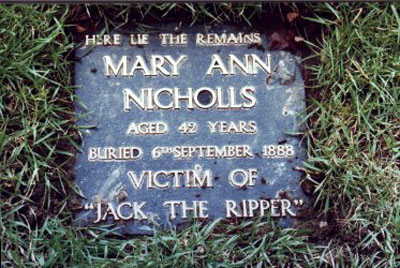
Leave a Reply